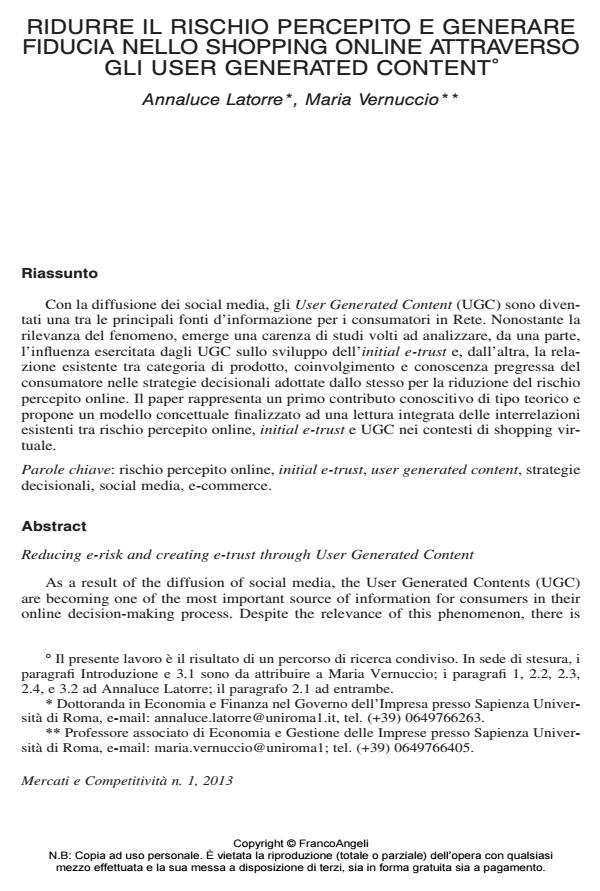Reducing e-risk and creating e-trust through User Generated Content
Journal title MERCATI E COMPETITIVITÀ
Author/s Annaluce Latorre, Maria Vernuccio
Publishing Year 2013 Issue 2013/1
Language Italian Pages 21 P. 143-163 File size 924 KB
DOI 10.3280/MC2013-001009
DOI is like a bar code for intellectual property: to have more infomation
click here
Below, you can see the article first page
If you want to buy this article in PDF format, you can do it, following the instructions to buy download credits

FrancoAngeli is member of Publishers International Linking Association, Inc (PILA), a not-for-profit association which run the CrossRef service enabling links to and from online scholarly content.
As a result of the diffusion of social media, the User Generated Contents (UGC) are becoming one of the most important source of information for consumers in their online decision-making process. Despite the relevance of this phenomenon, there is still a lack of studies focused on how the UGC affect the initial e-trust creation and the relationship among product category, involvement and consumer knowledge in decision- making strategies for the e-risk reduction. This paper represents a first theoretical contribution in the field and proposes a conceptual model that aims to analyze the interrelations among e-risk, initial e-trust and UGC in online shopping environments.
Keywords: E-risk, initial e-trust, user generated content, decision-making strategies, social media, e-commerce
- Social media brand communities and brand value co-creation: Evidences from Italy Riccardo Rialti, Lamberto Zollo, Maria Carmen Laudano, Cristiano Ciappei, in MERCATI & COMPETITIVITÀ 3/2018 pp.111
DOI: 10.3280/MC2018-003007 - L'efficacia delle campagne di social couponing: uno studio tra i merchant di Groupon Fabiio Cassia, Francesca Magno, Marta Ugolini, in MERCATI E COMPETITIVITÀ 3/2014 pp.41
DOI: 10.3280/MC2014-003004 - User-Generated Systems of Signs and Meanings in Product Customization: Taxonomies and Research Directions Maria Antonietta Raimondo, Stefania Farace, Gaetano "Nino" Miceli, in MERCATI & COMPETITIVITÀ 2/2018 pp.61
DOI: 10.3280/MC2018-002004
Annaluce Latorre, Maria Vernuccio, Ridurre il rischio percepito e generare fiducia nello shopping online attraverso gli User Generated Content in "MERCATI E COMPETITIVITÀ" 1/2013, pp 143-163, DOI: 10.3280/MC2013-001009